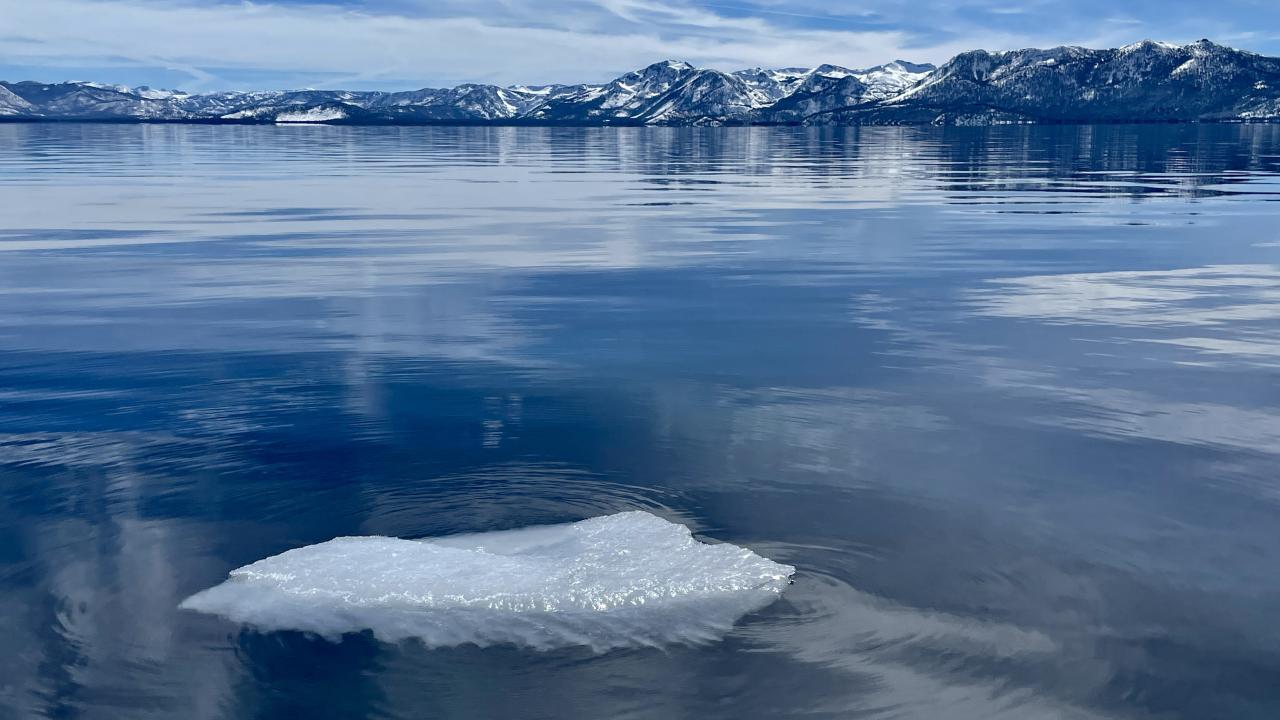For the last five months of 2022, Lake Tahoe was the clearest it has been since the 1980s. That is due in part to a resurgence of the lake’s native zooplankton. They’ve provided a natural clean-up crew to help restore the lake’s famous blue waters.
The findings are reported in the “Lake Tahoe Clarity Report 2022,” released today from the UC Davis Tahoe Environmental Research Center, or TERC, for the Tahoe Regional Planning Agency.
Clarity sinks in
Clarity is measured as the depth to which a 10-inch white disk, called a Secchi disk, remains visible when lowered into the water.
In 2022, Lake Tahoe’s average annual clarity was 71.7 feet compared to 61 feet in 2021. The key finding from 2022 was the great improvement in lake clarity from August through December, when the average Secchi depth was 80.6 feet. This coincided with the highest numbers of the zooplankton Daphnia and Bosmina.
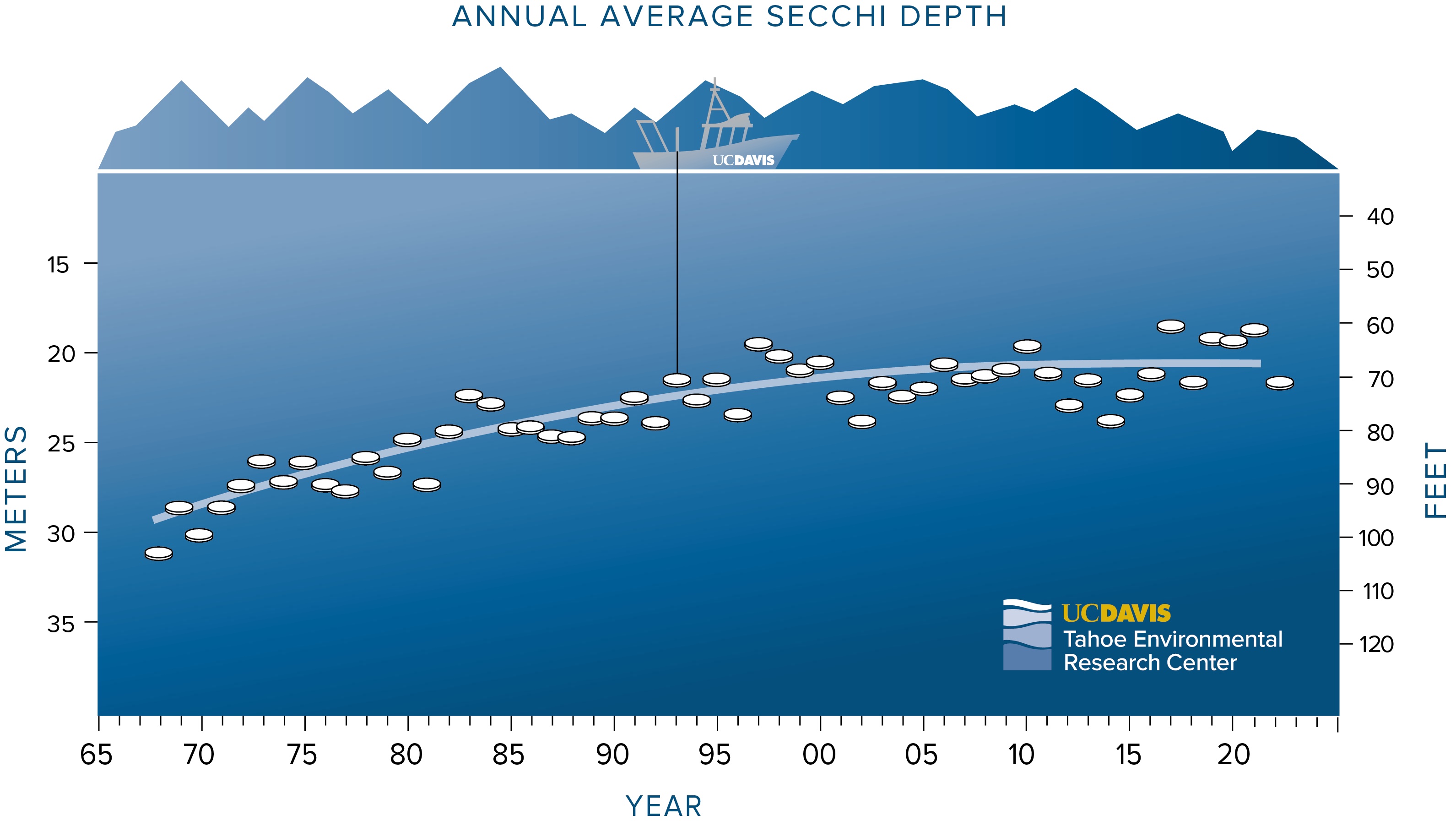
The states of California and Nevada, which share a border at Lake Tahoe, are actively working to restore lake clarity to its historic 97.4 feet.
Zooplankton a clear factor
The primary factors affecting lake clarity are the concentration of particles in a specific size range, such as silt and clay, and tiny phytoplankton, or algae. The phytoplankton Cyclotella, a single-celled alga, is in this size range and has impacted clarity in most years.
Zooplankton are small, microscopic animals. Some zooplankton, particularly Daphnia and Bosmina, are specialized to consume particles in that critical size range.
“Daphnia and Bosmina largely disappeared from the lake after they were grazed down following the introduction of the Mysis shrimp in the 1960s,” said Geoffrey Schladow, director of the UC Davis Tahoe Environmental Research Center. “In late 2021, the Mysis population unexpectedly crashed, and it took 12 months for the Daphnia and Bosmina to build up their numbers and start their natural cleansing.”
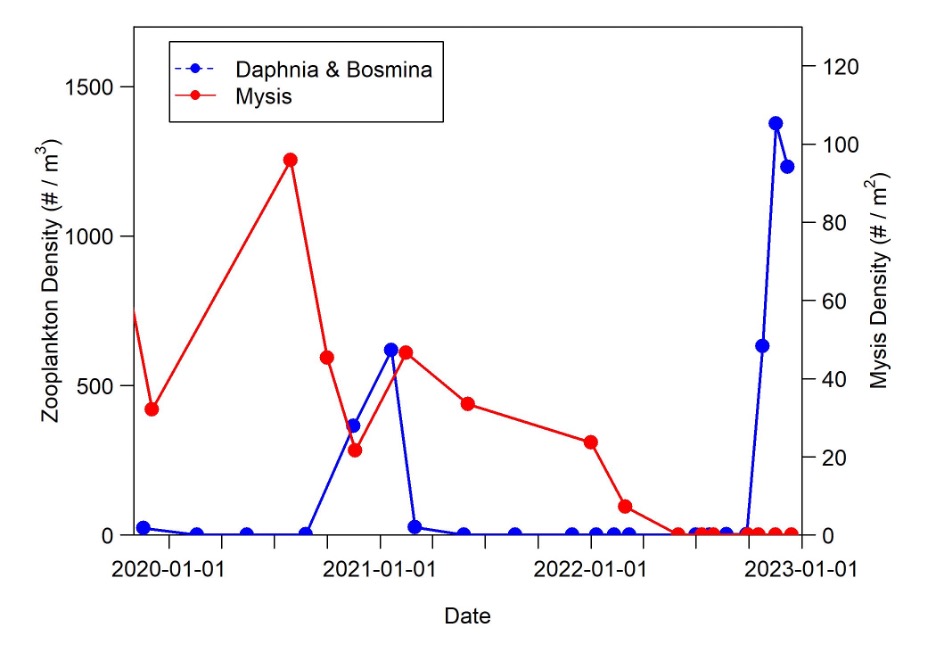
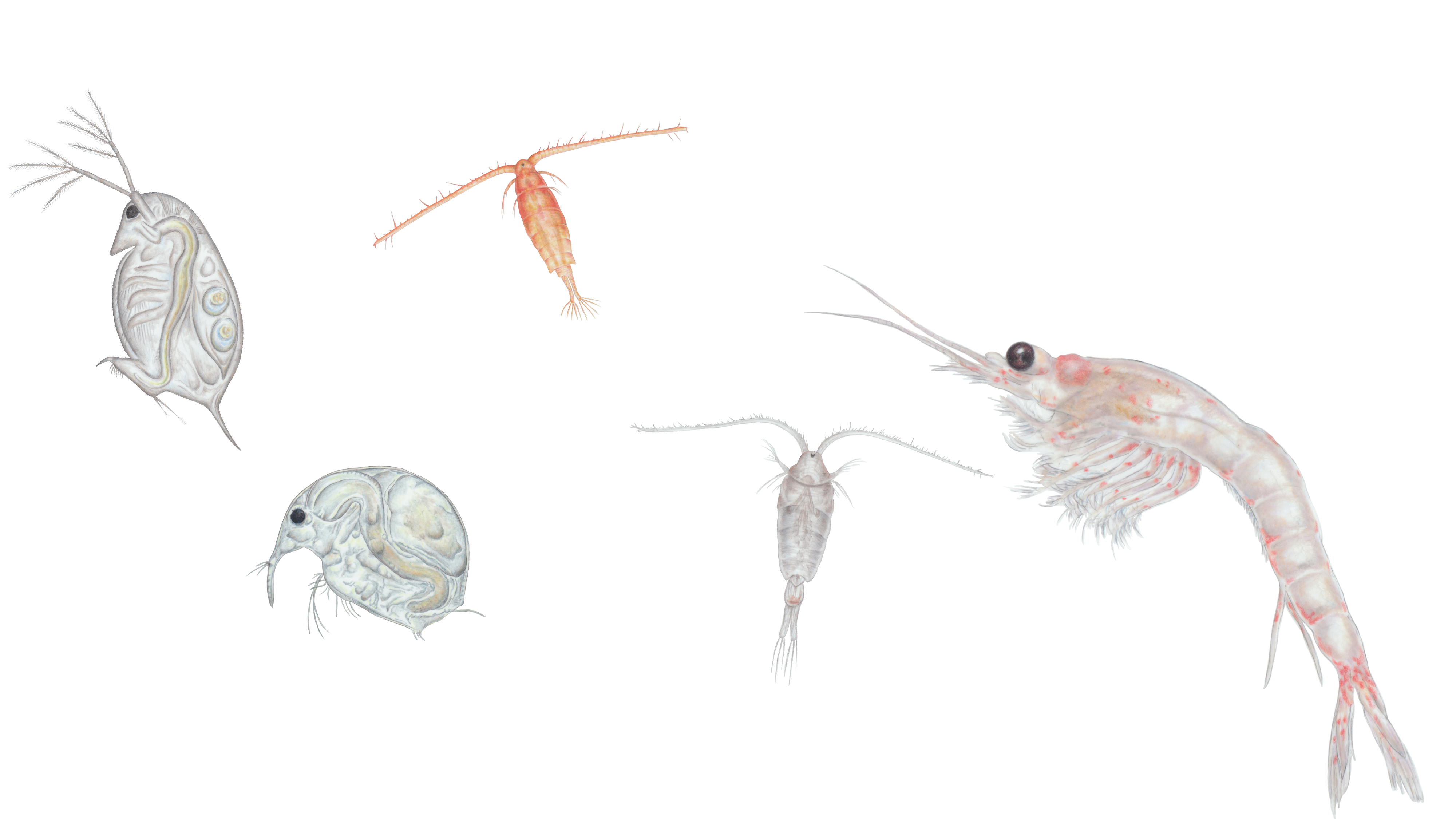
Other factors are known to influence year-to-year changes in clarity. These include the magnitude of the runoff, the warming of the lake surface and the depth to which the lake mixes in the previous winter. The report examined all these factors and concluded that only the change in the zooplankton community could account for the magnitude of this year’s change.
For a limited time only
The researchers emphasize that the process is still in its early stages, and they expect the clarity improvement to continue through 2023.
“We expect the impact of Daphnia and Bosmina to grow over 2023, and clarity may return to 1970s levels — despite the expected large runoff from this year’s record snowpack,” TERC boat captain and Secchi disk observer Brant Allen said. “These events support the hypothesis we put forward several years ago that the food web is a major factor in controlling lake clarity.”
However, the assistance provided by Daphnia and Bosmina may be only short-term. Mysis shrimp populations are expected to rebound. As they consume Daphnia and Bosmina, clarity will return to what we have seen in the past 20 years.
“Future management actions should explicitly look at incorporating ways of controlling the Mysis population,” Schladow said. “We have a brief window of time to monitor the lake in the absence of Mysis and then track the impacts of their return on lake clarity.”
This would be in addition to the strenuous efforts that are taking place to keep fine particles and nutrients out of Lake Tahoe. Management agencies in the basin report more than 500,000 pounds of fine sediment and other clarity-harming pollutants are being kept out of the lake every year through roadway maintenance and erosion control projects.
TERC scientists are currently monitoring zooplankton communities through donor funding. They are also working with local fishing guides to monitor changes to fish. Kokanee salmon, for example, are expected to be larger in 2023, as Daphnia are their preferred food source.
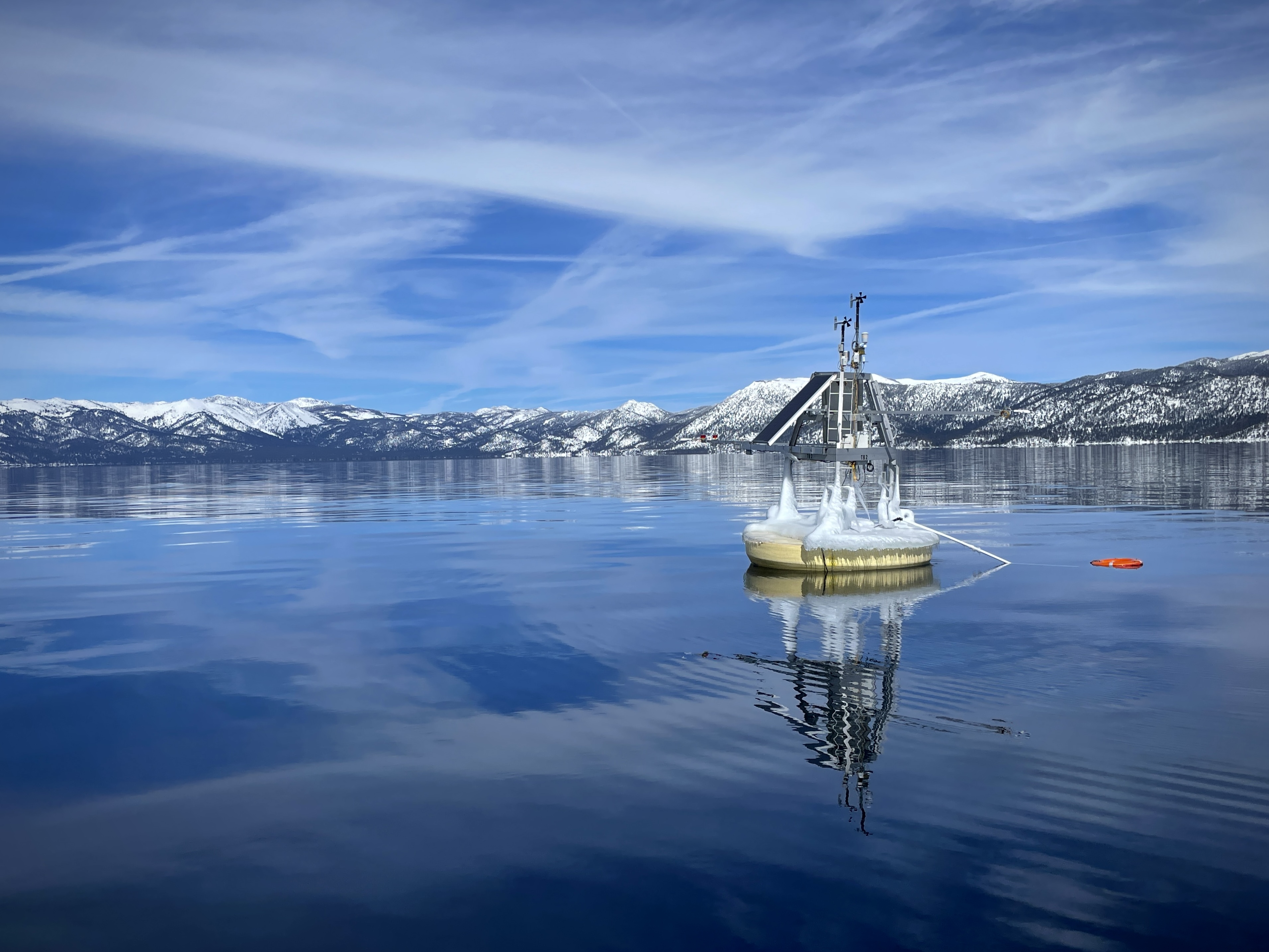
Protecting Lake Tahoe
UC Davis has measured clarity and other health indicators at Lake Tahoe since 1968, helping to inform policymakers and stakeholders on strategies to protect the lake and stabilize the decline in clarity that dates back to the region’s development boom in the 1960s.
In 1969, the states of Nevada and California created the Tahoe Regional Planning Agency, or TRPA, to lead the collaborative effort to protect and restore Lake Tahoe and better manage growth and development in the region. TRPA Executive Director Julie Regan says the emerging trend is welcome news for Lake Tahoe at a time when the ecosystem is experiencing more extreme storms, wildfire, and warmer temperatures.
“The lake’s resilience must continue to be supported by regional investments in water quality, forest health and aquatic invasive species prevention and control,” Regan said. “We will continue to work with regional science partners to better understand the role native species play in promoting clarity.”
In 2022, UC Davis scientists took 28 individual readings at Lake Tahoe’s long-term index station. View the historic clarity readings from 1968-2022.
The clarity report is funded by the Tahoe Regional Planning Agency.
Media Resources
Media Contacts:
- Geoffrey Schladow, UC Davis Tahoe Environmental Research Center, 530-902-2272, gschladow@ucdavis.edu
- Kat Kerlin, UC Davis News and Media Relations, 530-750-9195, kekerlin@ucdavis.edu
- Jeff Cowen, Tahoe Regional Planning Agency, 775-589-5278, jcowen@trpa.gov
